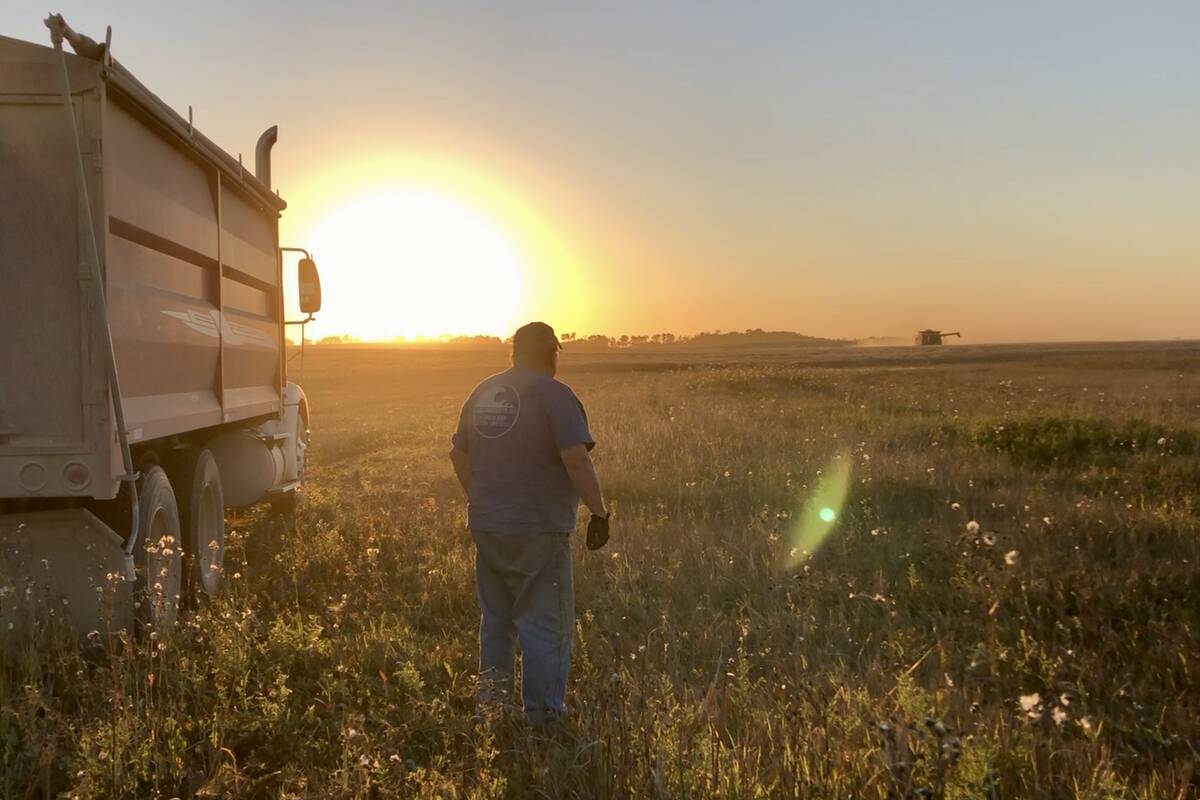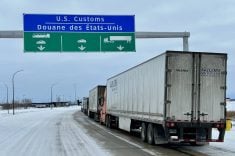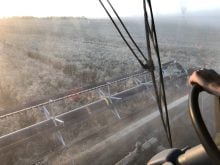WINNIPEG – There is a tidal wave of controversy over how Manitoba municipalities are compensated for natural disasters like this spring’s flood in the Red River Valley.
The provincial government believes municipalities that use their own staff and equipment during normal working hours to prepare for major flooding or repair damage should be compensated.
Federal government guidelines allow compensation only for contracted equipment and staff and the oil, gas, maintenance and overtime used by the municipality.
But government services minister Brian Pallister said the federal government did not enforce this guideline until last August, during an audit of 1993 floods.
Read Also

VIDEO: Bittersweet harvest for this family farmhand
Bruce Burnett helps his brother harvest wheat and canola for the last time on the family farm in Manitoba where they both grew up.
“In actual fact, the reality is that in practice, they did allow municipalities to claim for a long, long time,” Pallister said, adding the province has given the federal government more than 1,000 examples.
But the regional director for Emergency Preparedness Canada, the government agency that oversees disaster assistance, tells a different story.
No concrete proof
Larry French said the federal government has never knowingly provided the compensation and the provincial government’s examples don’t prove its point.
“It is a whole bunch of numbers and names and such, but there’s no way I can decipher whether the federal government shared in (compensation),” French said.
The provincial government won’t let federal auditors look at background documents and won’t meet with their federal counterparts, French said.
Pallister contended the federal government has ample information to work with. He said the provincial government is being stonewalled. And French said the argument is getting personal.
“I’ve essentially been called a liar,” he said. “Mr. Pallister does not seem to understand that that data is just data. It’s not information, there’s no audit trail.”
Both say the ball is in the other’s court.
Pallister said because of the federal government’s position, more municipalities will contract out disaster repairs, which he said seems counterproductive.
Cost not fair
However, he said it’s not fair for the local governments to absorb the cost of a natural disaster.
“These municipalities are not trying to get rich off a natural disaster,” he said, pointing to their use of volunteers for sandbagging.
“They could hire people under the guidelines and be fully compensated by the federal and provincial governments. But they use volunteers. For heaven’s sakes, look at that as the best illustration of the degree of trust and faith that we should have in these people.”
French said the disaster assistance program is a hardship program, not a form of insurance. Municipalities and provinces do not have to pay premiums to get help.
That’s why the federal government will share the extra costs of a disaster, like overtime, contracting out repairs or machinery maintenance costs, French said.
“Anything extra that this event has cost you, we will share with the province if they have paid (compensation),” French said.
He also noted Manitoba has received 20 percent of the federal disaster assistance money over the years because of more natural disasters and an efficient disaster assistance board.
Pallister said the province has received about 100 individual claims and 30 municipal claims for flooding so far this spring, but he expects more as waters continue to recede. No damage estimate is available.
















